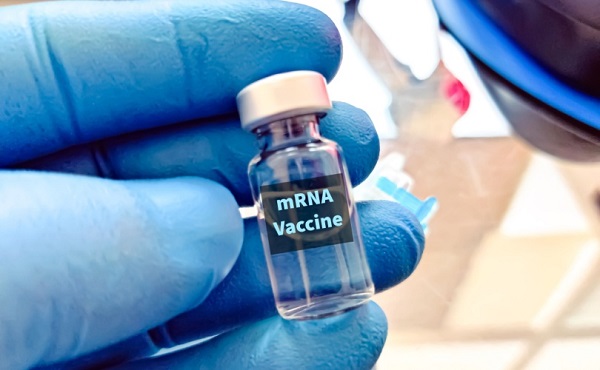Alberta
Witness report of a man loading a gun outside of bank leads to pursuit and apprehension of three in Cold Lake

Cold Lake RCMP arrest three after pursuit – charge for robbery
Cold Lake, Alta. – On Feb. 6, 2020 at approximately 10:20 a.m., Cold Lake RCMP responded to a report of a male loading a gun outside a bank in Cold Lake.
A witness called police after seeing the suspect in a truck that was parked outside of the bank. Police responded and located the truck that was driving away from the bank. No armed robbery was committed.
A traffic stop was attempted before the truck fled onto Highway 28. As police pursued the truck it lost control and a collision occurred with a police vehicle. Both vehicles came to a stop. The suspect vehicle then attempted to flee again while in a ditch before it was disabled by another police vehicle.
Three suspects were taken into custody without incident. A loaded firearm, ammunition, knife and drugs were seized.
Dylan Cowston (21) of Cherry Grove, Alta., was charged with 25 offences, some of which include:
- Robbery with a firearm
- Careless use of a firearm (x2)
- Carrying a concealed weapon (x2)
- Possession for the purpose of trafficking
- Possession of a weapon for dangerous purpose (x2)
Omar Csurdi (22) of Cold Lake, Alta., was charged with 27 offences, some of which include:
- Robbery with a firearm
- Careless use of a firearm (x2)
- Carrying a concealed weapon (x2)
- Possession for the purpose of trafficking
- Breach of a court order (x3)
James Lees (22) of Cold Lake, Alta., was charged with 30 offences, some of which include:
- Robbery with a firearm
- Careless use of a firearm (x2)
- Carrying a concealed weapon (x2)
- Possession for the purpose of trafficking
- Flight from police
James Lees and Omar Csurdi were remanded into custody after a judicial hearing. Dylan Cowston was released with conditions. The three accused will be appearing in Cold Lake Provincial Court on Feb. 12, 2020.
“The prompt response to the initial 911 call and the thorough investigation completed has levied multiple charges against the accused,” says Cpl. Marie-Eve Mackenzie-Plante “Our general duty members along with Police Dog Services and General Investigative Section will continue to keep our community safe when faced with these types of situations.”
Alberta
CPP another example of Albertans’ outsized contribution to Canada

From the Fraser Institute
By Tegan Hill
Amid the economic uncertainty fuelled by Trump’s trade war, its perhaps more important than ever to understand Alberta’s crucial role in the federation and its outsized contribution to programs such as the Canada Pension Plan (CPP).
From 1981 to 2022, Albertan’s net contribution to the CPP—meaning the amount Albertans paid into the program over and above what retirees in Alberta received in CPP payments—was $53.6 billion. In 2022 (the latest year of available data), Albertans’ net contribution to the CPP was $3.0 billion.
During that same period (1981 to 2022), British Columbia was the only other province where residents paid more into the CPP than retirees received in benefits—and Alberta’s contribution was six times greater than B.C.’s contribution. Put differently, residents in seven out of the nine provinces that participate in the CPP (Quebec has its own plan) receive more back in benefits than they contribute to the program.
Albertans pay an outsized contribution to federal and national programs, including the CPP because of the province’s relatively high rates of employment, higher average incomes and younger population (i.e. more workers pay into the CPP and less retirees take from it).
Put simply, Albertan workers have been helping fund the retirement of Canadians from coast to coast for decades, and without Alberta, the CPP would look much different.
How different?
If Alberta withdrew from the CPP and established its own standalone provincial pension plan, Alberta workers would receive the same retirement benefits but at a lower cost (i.e. lower CPP contribution rate deducted from our paycheques) than other Canadians, while the contribution rate—essentially the CPP tax rate—to fund the program would likely need to increase for the rest of the country to maintain the same benefits.
And given current demographic projections, immigration patterns and Alberta’s long history of leading the provinces in economic growth, Albertan workers will likely continue to pay more into the CPP than Albertan retirees get back from it.
Therefore, considering Alberta’s crucial role in national programs, the next federal government—whoever that may be—should undo and prevent policies that negatively impact the province and Albertans ability to contribute to Canada. Think of Bill C-69 (which imposes complex, uncertain and onerous review requirements on major energy projects), Bill C-48 (which bans large oil tankers off B.C.’s northern coast and limits access to Asian markets), an arbitrary cap on oil and gas emissions, numerous other “net-zero” targets, and so on.
Canada faces serious economic challenges, including a trade war with the United States. In times like this, it’s important to remember Alberta’s crucial role in the federation and the outsized contributions of Alberta workers to the wellbeing of Canadians across the country.
Alberta
Made in Alberta! Province makes it easier to support local products with Buy Local program

Show your Alberta side. Buy Local. |
When the going gets tough, Albertans stick together. That’s why Alberta’s government is launching a new campaign to benefit hard-working Albertans.
Global uncertainty is threatening the livelihoods of hard-working Alberta farmers, ranchers, processors and their families. The ‘Buy Local’ campaign, recently launched by Alberta’s government, encourages consumers to eat, drink and buy local to show our unified support for the province’s agriculture and food industry.
The government’s ‘Buy Local’ campaign encourages consumers to buy products from Alberta’s hard-working farmers, ranchers and food processors that produce safe, nutritious food for Albertans, Canadians and the world.
“It’s time to let these hard-working Albertans know we have their back. Now, more than ever, we need to shop local and buy made-in-Alberta products. The next time you are grocery shopping or go out for dinner or a drink with your friends or family, support local to demonstrate your Alberta pride. We are pleased tariffs don’t impact the ag industry right now and will keep advocating for our ag industry.”
Alberta’s government supports consumer choice. We are providing tools to help folks easily identify Alberta- and Canadian-made foods and products. Choosing local products keeps Albertans’ hard-earned dollars in our province. Whether it is farm-fresh vegetables, potatoes, honey, craft beer, frozen food or our world-renowned beef, Alberta has an abundance of fresh foods produced right on our doorstep.
Quick facts
- This summer, Albertans can support local at more than 150 farmers’ markets across the province and meet the folks who make, bake and grow our food.
- In March 2023, the Alberta government launched the ‘Made in Alberta’ voluntary food and beverage labelling program to support local agriculture and food sectors.
- Through direct connections with processors, the program has created the momentum to continue expanding consumer awareness about the ‘Made in Alberta’ label to help shoppers quickly identify foods and beverages produced in our province.
- Made in Alberta product catalogue website
Related information
-

 2025 Federal Election1 day ago
2025 Federal Election1 day agoCarney’s Fiscal Fantasy: When the Economist Becomes More Dangerous Than the Drama Teacher
-

 2025 Federal Election1 day ago
2025 Federal Election1 day agoCampaign 2025 : The Liberal Costed Platform – Taxpayer Funded Fiction
-

 International6 hours ago
International6 hours agoPope Francis has died aged 88
-

 2025 Federal Election1 day ago
2025 Federal Election1 day agoA Perfect Storm of Corruption, Foreign Interference, and National Security Failures
-

 Business6 hours ago
Business6 hours agoCanada Urgently Needs A Watchdog For Government Waste
-

 Energy5 hours ago
Energy5 hours agoIndigenous-led Projects Hold Key To Canada’s Energy Future
-

 2025 Federal Election5 hours ago
2025 Federal Election5 hours agoCarney’s budget means more debt than Trudeau’s
-

 International2 hours ago
International2 hours agoPope Francis Dies on Day after Easter








